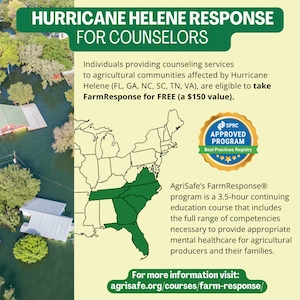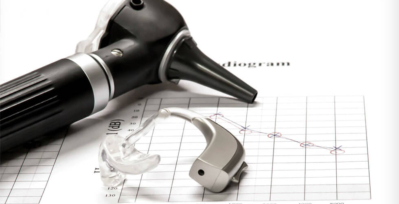Last updated on December 9th, 2024 at 05:34 pm
Hearing Loss Prevention Resources
Noise-induced hearing loss is common in agricultural work. In fact, agriculture is listed in the top three occupations that cause hearing loss. Noise-induced hearing loss is permanent and can lead to a diminished quality of life. Studies have shown it can contribute to isolation and depression. Hearing loss is usually gradual and may go unnoticed for several years. It does not only affect older adults, but affects all ages, including young adults and teens.
Some key indicators of hearing loss include:
- Frequently asking people to repeat things
- Continually turning up the volume on a television or radio
- Hearing ringing in your ears (known as tinnitus)
- Experiencing difficulty with hearing and understanding conversations in noisy or public areas
- Noticing changes in common noises from your work environment (they sound different, distant, or quieter)
For years, loss of hearing has been accepted as part of the job in ranching and farming. AgriSafe believes that hearing loss is preventable, and there are measures that can reduce your risk of hearing loss.
Hearing Loss Prevention Suggestions:
- Talk to your healthcare provider now about hearing loss, and get a hearing baseline exam.
- Ask your healthcare provider to check for and remove wax buildup in your ears.
- Do not put things such as Q-Tips or cotton swabs in your ears. While swabs might pull out some wax, they also push wax and dirt deeper into the ear (if necessary, you can try drops that help soften and dislodge wax buildup).
- Noise is considered dangerous at 85 decibels and above. If you come into contact with sounds that exceed that noise level, it is recommended that you wear hearing protection (these dangerous sound levels include grain dryers, grinders, saws, lawn mowers, and squealing animals).
- Use a sound level meter to check noise in your work areas.
- Use hearing protection equipment. The three main types include: insertable, formable earplugs; insertable, pre-formed earplugs; and earmuffs. NIOSH-approved protection will have a noise reduction rating (NRR) that serves as a guide for what to purchase. Make sure that your protective equipment fits properly and is comfortable.
The best protection is the one that you will wear!
Hearing Loss Prevention Resources
Resource Library
Webinars
Websites
- Hearing Disorders and Deafness
- Hearing Loss Among Farmers and Agricultural Workers
- OSHA Youth in Agriculture
Page updated: December 2024




